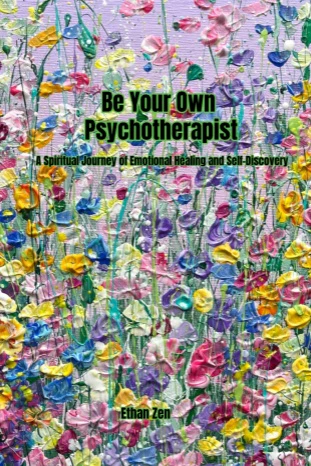Mindful Meditation Zen and Mental Health
The enjoyment of material possessions is never able to provide satisfaction and tranquility to the mind or spirit.
Yet, people often seek fulfillment in material life, attempting to feel secure and reliable. The pursuit typically revolves around basic needs, relationships, and more. Ironically, the more people pursue these things, the more troubles and distress they encounter.
It’s like quenching thirst with saltwater or seawater, the more you drink, the thirstier you become. Although most people may not have experienced quenching thirst with saltwater, feeling insecure and dissatisfied in life is a reality. Otherwise, everyone wouldn’t be here tonight to listen to this lecture.
I have a follower who owns two houses. Before purchasing the second house, he lived a very happy life. Now that he has two houses, he’s become extremely worried. Especially with the recent decline in real estate, he’s eager to sell the house at a low price but is reluctant to do so. Not selling it means a heavy burden of mortgage. Thus, he’s torn between anxiety and indecision, feeling deeply unsettled and devoid of security. Therefore, the pursuit of material enjoyment is absolutely unreliable and inconclusive.
We should shift the focus of life towards spiritual pursuits, as it provides a sense of reliance and solace. However, seeking security at the spiritual level is not easy.
For example, some people have unwavering faith in their religious beliefs, while others firmly believe in their philosophical thoughts. Having this spiritual reliance and solace enables them to lead a healthy and fulfilling life.
When some individuals achieve great success in the arts or in their work, they feel a sense of security and fulfillment in life. But if this achievement is not acknowledged by the external environment, does it still hold meaning in their lives? This is questionable.
I know a very talented and hardworking artist whose paintings don’t sell. I told him, “Your paintings are excellent. Perhaps people just don’t understand them yet, so don’t be disheartened.”
He despondently replied, “I don’t know if anyone will appreciate my art in the future.”
I said, “It’s okay. Perhaps after you pass away, people will understand your paintings. Isn’t that similar to Van Gogh? Isn’t that good?”
He said, “It’s pitiful to be like Van Gogh, not making a fortune during one’s lifetime but bringing wealth to future generations.”
It’s evident that this artist does not affirm his efforts, so in times of difficulty, he doubts his own life.
Zen is the method for peace of mind, comprising two aspects: relaxation of the mind and letting go of worries.
This requires practice. Simply knowing without practicing is futile. However, this relaxation and letting go are temporary, not permanent. Most people cannot let go permanently at once; they might be able to let go for a minute or two, but then they struggle to maintain it. However, most people need to practice temporary letting go first, and then they can achieve permanent letting go.
Zen stories for peace of mind
Although enlightenment is not easy, it is quite captivating. After a person attains enlightenment, they are undoubtedly psychologically healthy. There are many famous Zen stories of sudden enlightenment, such as the story of a monk seeking help from a Zen master, and the story of a monk visiting a teacher for assistance and finding enlightenment after an unexpected event.
The basic attitude for peace of mind
Zen’s approach to psychological therapy involves methods and processes for peace of mind. The reasons for psychological unrest have existed from birth. If one hasn’t realized their issues after growing up, that is the real problem. In this world, there are no people with completely healthy minds. If you are here to listen to this lecture, it means you or someone else needs help. From this perspective, you are already a normal, healthy person.
Basically, when you find issues or illnesses within yourself and do not conceal them, this attitude is a healthy behavior. Zen teaches us to face facts, handle them, and then let them go. No matter the circumstances, considering them as catastrophic is futile. It’s best to prevent what you know might happen. If it must happen, worrying is of no use. Worry and anxiety not only fail to help but can also exacerbate the situation. Facing it is the best approach.
Levels of peace of mind in Zen
The method for peace of mind in Zen has different levels. First, it involves withdrawing many complicated thoughts from external sources and objects. This is akin to separating two people arguing or pulling one person away.
For instance, a layperson living in our temple often loses his temper. Every time my monastic disciple sees him getting angry, he immediately focuses on his breathing and examines why he feels agitated. This is the process of withdrawing the mind from external objects.
After withdrawing the mind, it needs to be calmed. It should be directed towards a method, known as concentration. There are various methods for concentration, such as counting breaths, contemplating specific topics, and just sitting. Each person breathes constantly, making counting breaths the most effective method. Contemplating specific topics and just sitting are specialized practices in Zen.
After calming the mind through practice, one must not cling even to this calm state. If you only aim for a tranquil mind, you might become overly passive. Letting go of this serene state is essential for achieving genuine psychological health.
The process of practice from withdrawing the mind, focusing the mind, to letting go of the mind is akin to transitioning from a scattered mind to a concentrated mind, then to a unified mind, and finally to a mind without attachment. It’s like riding a horse:
– Scattered Mind: Aware of the horse, but it’s untamed.
– Concentrated Mind: Aware of the horse, but it’s obedient.
– Unified Mind: No longer aware of the horse, achieving unity with the horse.
– Mind without Attachment: Neither aware of the horse, nor the rider.
Q&A Discussion
If a person has pursued spiritual pursuits for a long time but still feels troubled, they should not give up. Restlessness is illusory and diminishes when there is no attachment. The issue might stem from incorrect concepts or ineffective methods. It’s possible that the restlessness has actually lessened, but the person is unaware or unsatisfied with their progress.
These are the main points from the text you provided. If you need further assistance or if there are specific sections you’d like to focus on for translation, feel free to let me know.







